Enter all the desired criteria: the apps that satisfy them all will be searched; if a criterion is specified multiple times, only the last occurrence will be considered.

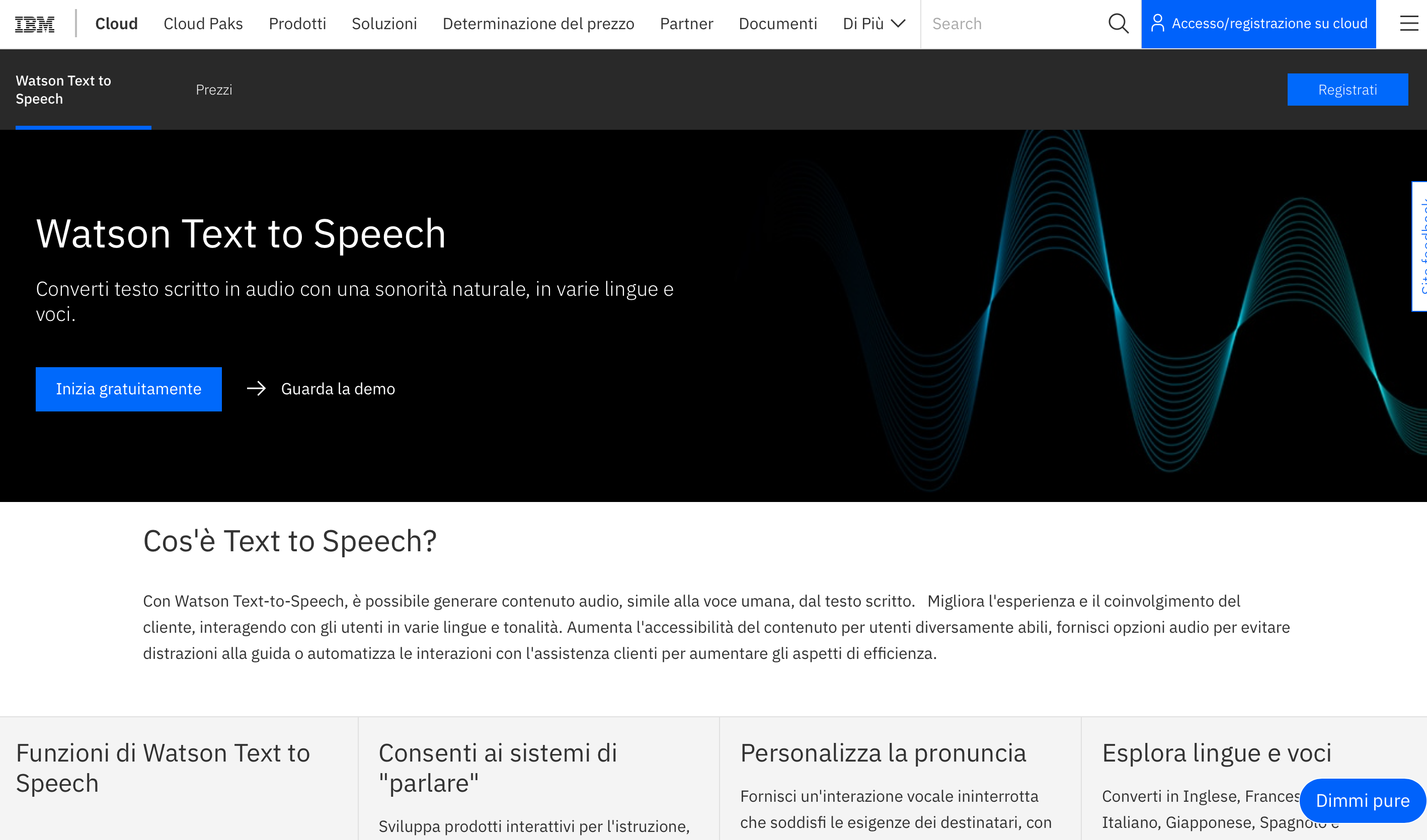 Once you click on "Watch the demo" the following screen will appear. This service allows, starting from a text, to create audio files with a cadence and intonation appropriate to the chosen language. It is available in 27 voices (13 neural and 14 standard) in 7 languages; to have an audio with a natural voice it is advisable to use neural voices (V3, enhanced dnn). The selected voices offer expressive synthesis (SSML) and voice transformation functions. The language in which the text has been written must correspond to the language of the selected voice, otherwise different text and voice languages will not produce correct results in pronunciation. The audio is returned in mp3 format which can be played using VLC and Audacity players.
Once you click on "Watch the demo" the following screen will appear. This service allows, starting from a text, to create audio files with a cadence and intonation appropriate to the chosen language. It is available in 27 voices (13 neural and 14 standard) in 7 languages; to have an audio with a natural voice it is advisable to use neural voices (V3, enhanced dnn). The selected voices offer expressive synthesis (SSML) and voice transformation functions. The language in which the text has been written must correspond to the language of the selected voice, otherwise different text and voice languages will not produce correct results in pronunciation. The audio is returned in mp3 format which can be played using VLC and Audacity players. 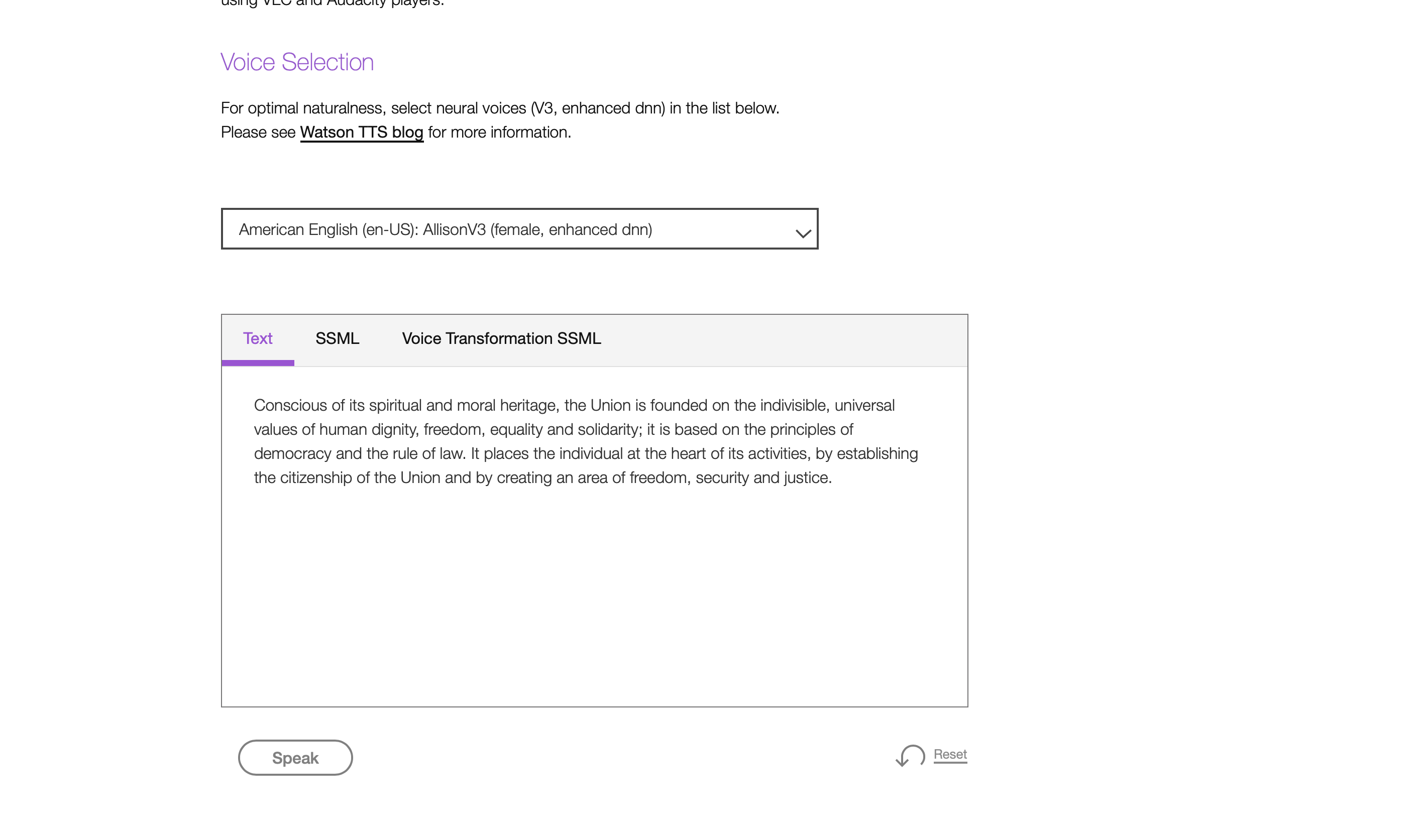 After entering the text you will need to click on the "speak" button, in this way you can hear the audio related to the written text.Then if you want to download the audio you have to click the mouse’s right button and choose "copy audio address" option, open it in another browser window and then download it.
After entering the text you will need to click on the "speak" button, in this way you can hear the audio related to the written text.Then if you want to download the audio you have to click the mouse’s right button and choose "copy audio address" option, open it in another browser window and then download it. 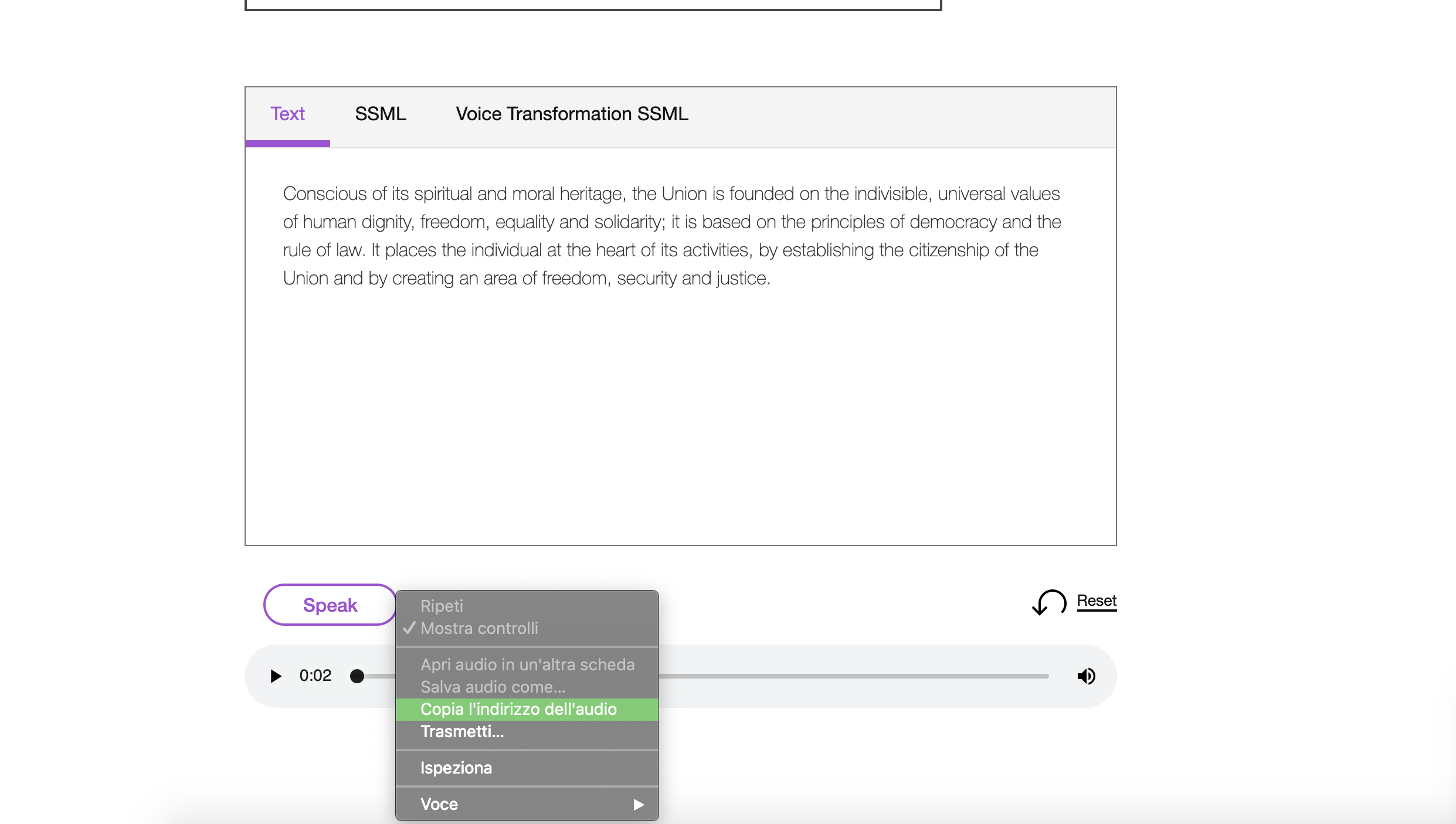 As indicated above, the selected items offer expressive synthesis functions (SSML). Speech Synthesis Markup Language is a standard markup language that allows you to control, in speech synthesis, pronunciation, volume, tone, speed, insert pauses, etc.For example, in the following screen you can see that the "break" element associated with the "time" attribute has been inserted, which indicates a certain length of the pause that can be expressed in seconds or milliseconds; another example is the insertion of the "prosody" element, which controls the tone, the speed of pronunciation and the volume of the text, with the attribute "rate" which indicates a change of speed in the pronunciation of the text. The SSML service also offers the possibility to use other elements: such as the use of SSML of expressivity (how the text must be expressed when is pronounced), the use of SSML for voice transformation and the insertion of phonemes to specify the phonetic spelling used to pronounce a word. To define the phonetic pronunciation of a word, use the
As indicated above, the selected items offer expressive synthesis functions (SSML). Speech Synthesis Markup Language is a standard markup language that allows you to control, in speech synthesis, pronunciation, volume, tone, speed, insert pauses, etc.For example, in the following screen you can see that the "break" element associated with the "time" attribute has been inserted, which indicates a certain length of the pause that can be expressed in seconds or milliseconds; another example is the insertion of the "prosody" element, which controls the tone, the speed of pronunciation and the volume of the text, with the attribute "rate" which indicates a change of speed in the pronunciation of the text. The SSML service also offers the possibility to use other elements: such as the use of SSML of expressivity (how the text must be expressed when is pronounced), the use of SSML for voice transformation and the insertion of phonemes to specify the phonetic spelling used to pronounce a word. To define the phonetic pronunciation of a word, use the 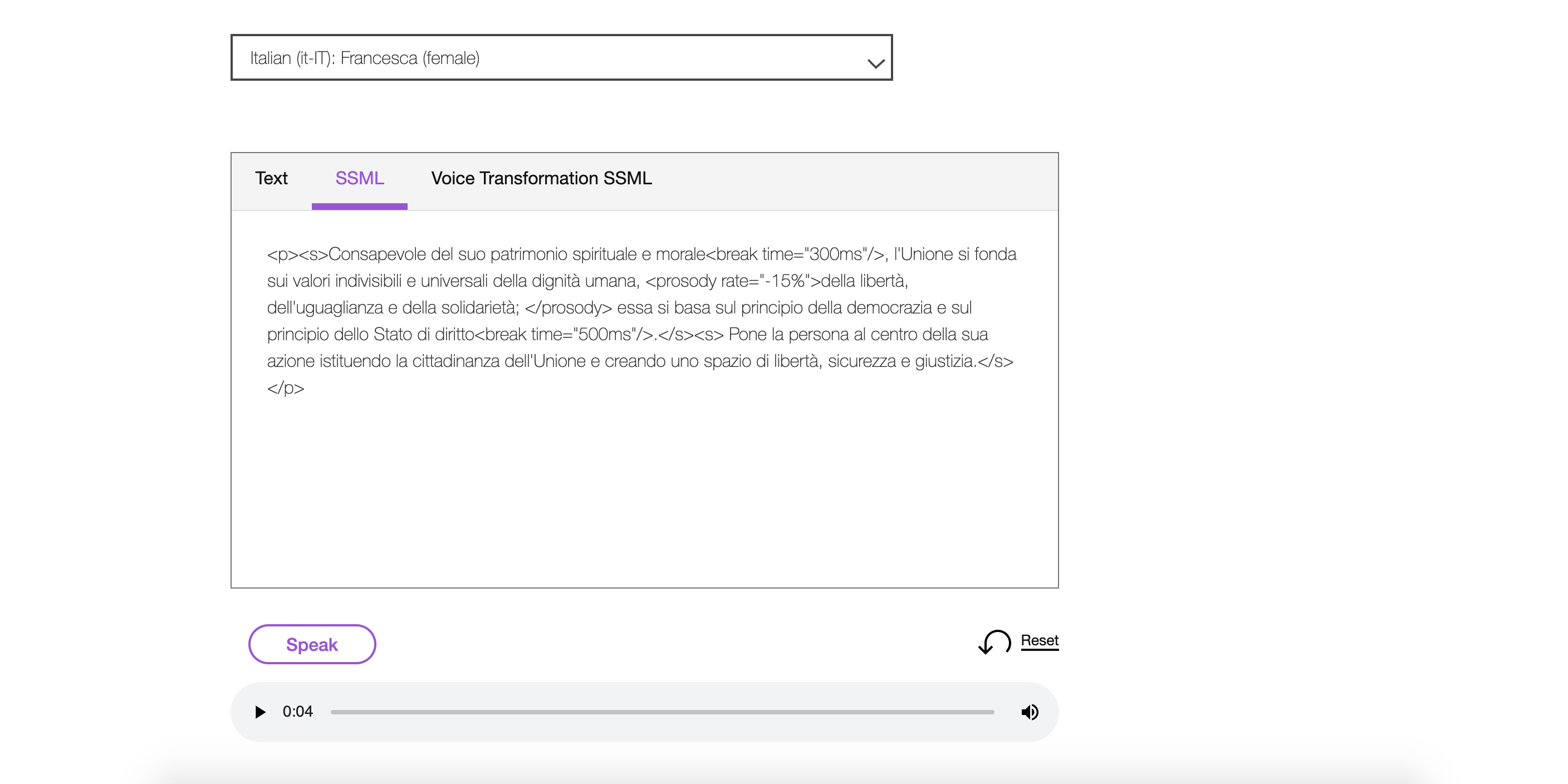 Using SSML for voice transformation allows us to expand the range of voices by using the
Using SSML for voice transformation allows us to expand the range of voices by using the 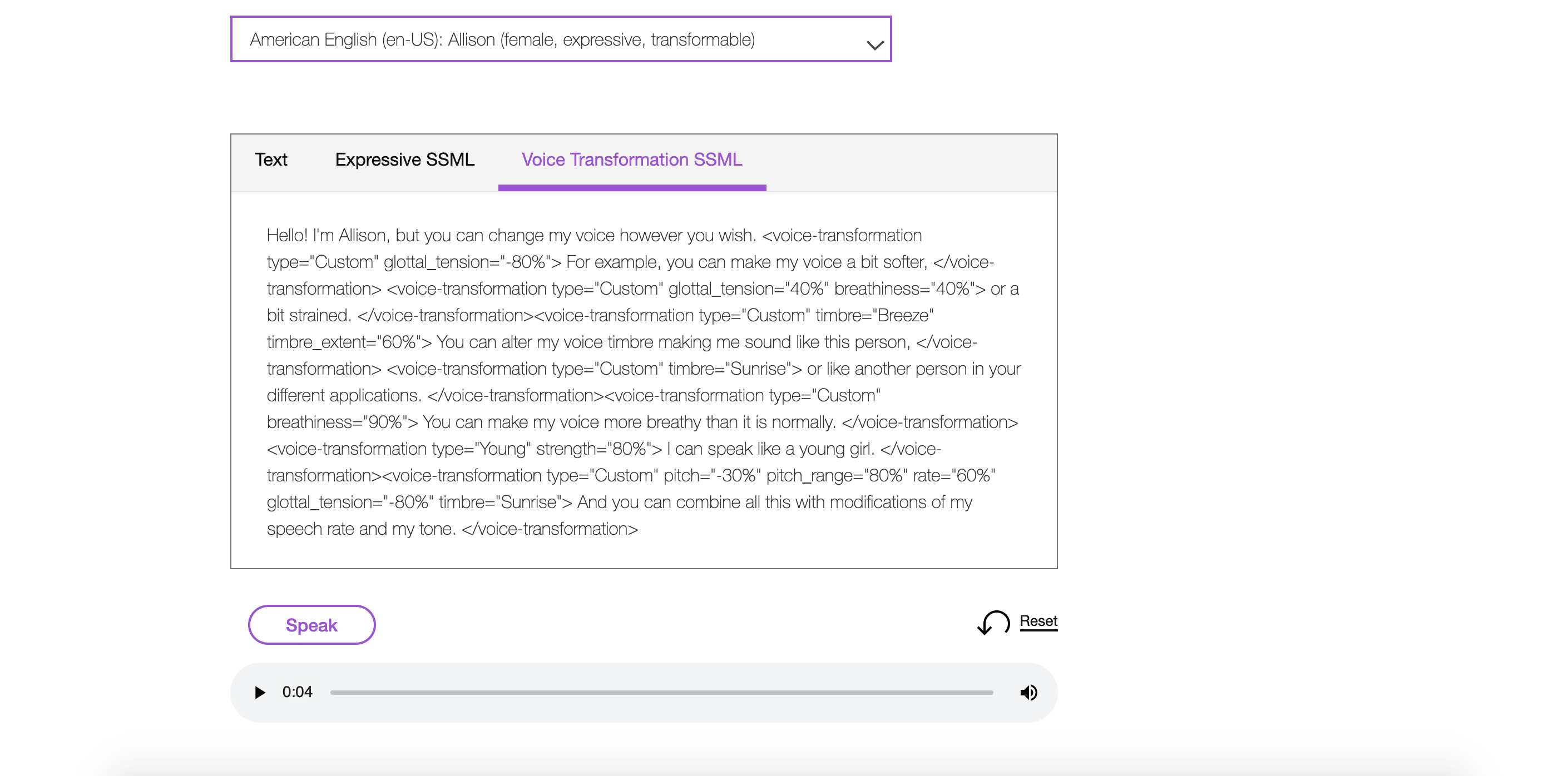
Copy link